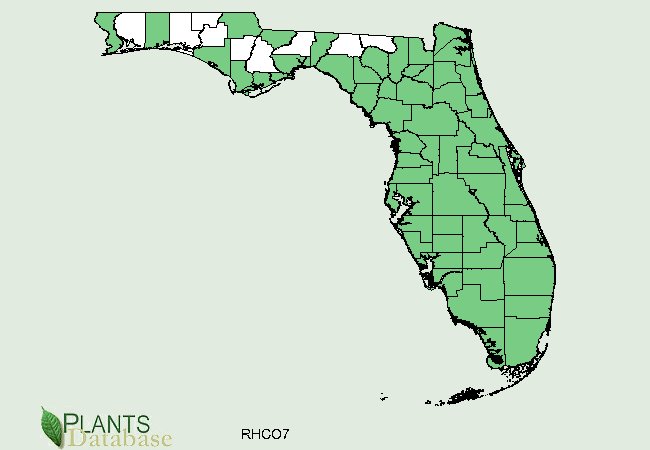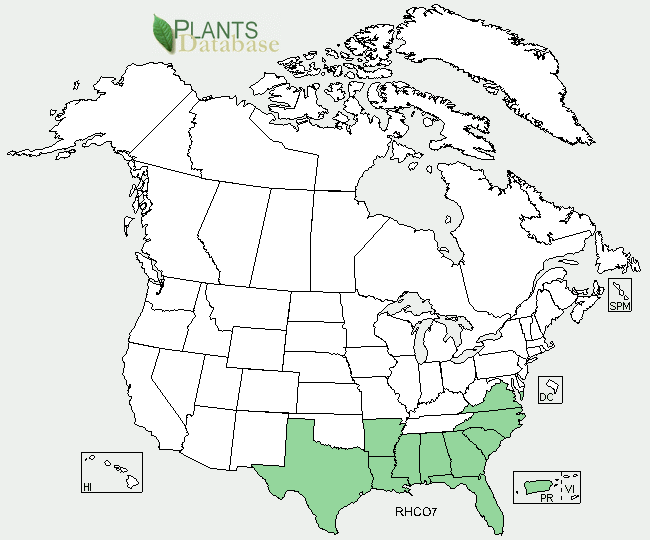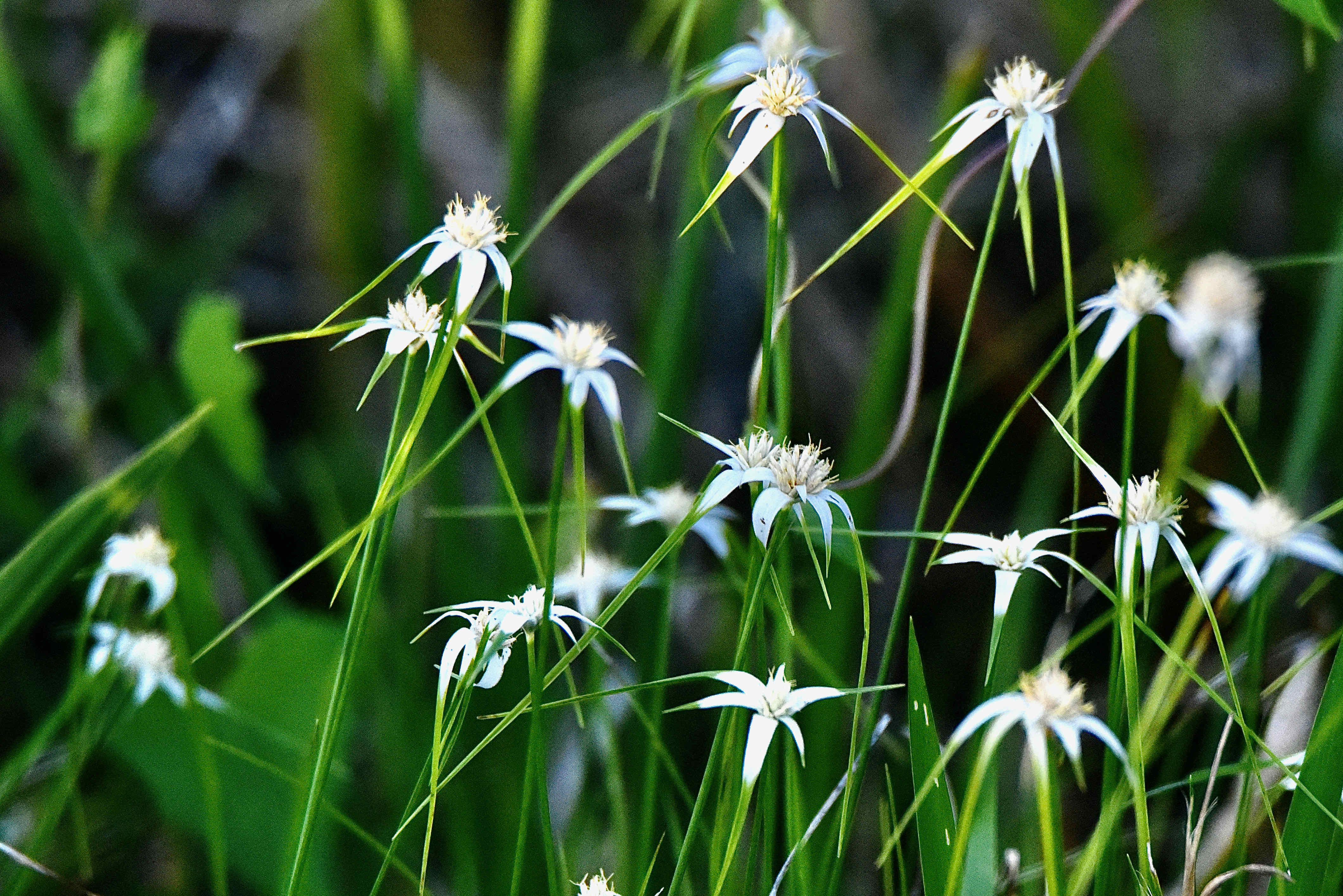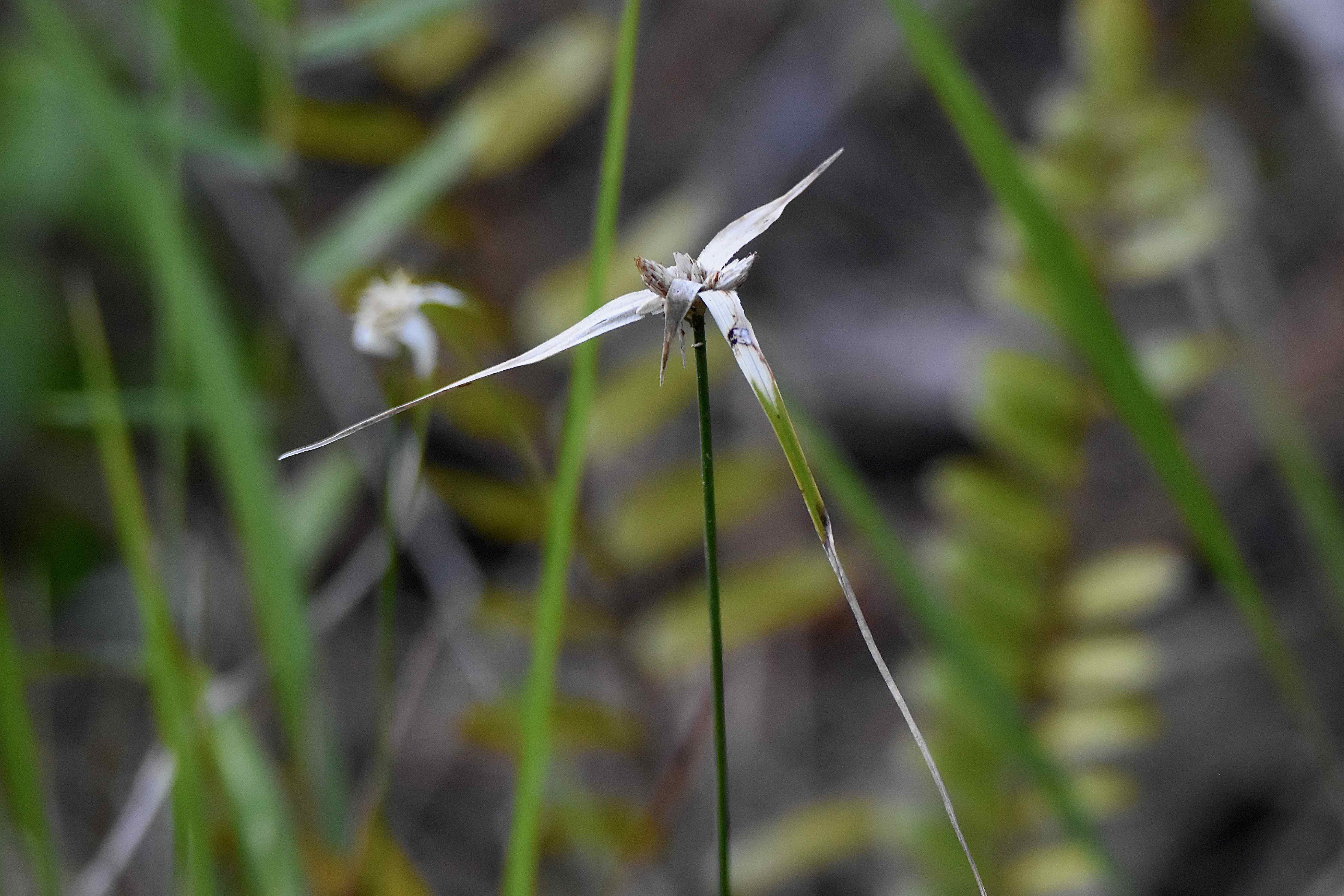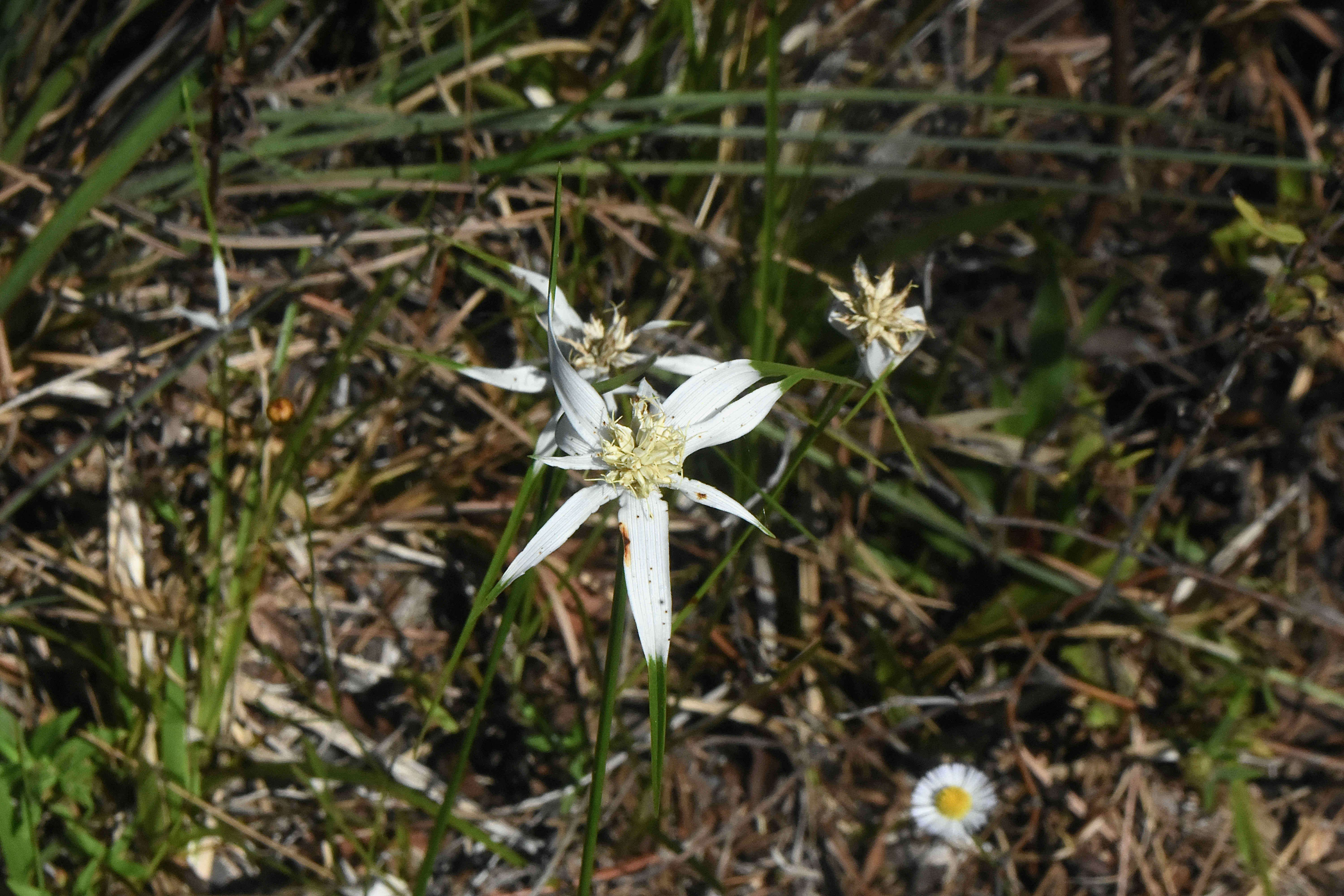
Starrush whitetop, photographed at Loxahatchee Slough Natural Area, Palm Beach Gardens, Palm Beach County, in April 2021.
Starrush whitetop, Rhynchospora colorata, makes the most of what little it has. Its flowers are far from showy but it dresses them up with large, white bracts to make them look like more than they really are.
The idea isn't to please our eyes, necessarily, but to attract pollinators that otherwise might overlook starrush whitetops' ordinary blooms in their quest for nectar.
Starrush whitetop is a Florida native found almost everywhere in the Sunshine State. Its range includes the southeastern United States as far north as Virginia and as far west as Texas, plus Bermuda, the Caribbean, Mexico, Central America and South America. It's common in most of its range, but Arkansas lists it as endangered. It is a perennial, a member of a family of grass-like plants called sedges. Its particular branch of the family, Rhynchospora, are known as beak rushes or horned rushes because of the shape of their seeds. There are more than 200 members of the genus worldwide, of which about two dozen are found in Florida.
Starrush whitetops normally stands between six inches and a foot tall, but can reach two feet when in bloom. The flowers sit atop a spike that usually has five to seven bracts radiating from the head. The bracts are long, white fading to green as they taper to a point. They look like they're part petal, part leaf but they're neither. In most plants, bracts are a rather ordinary looking part of the flower, but in some species, they are the main attraction. Think poinsettia, for example. It's all about luring pollinators — bees and butterflies, mainly — and spreading genetic material. The leaves on starrush whitetops form at the bottom of the plant.
Starrush whitetop is a plant of wet places — wet pinelands, marshes and wet prairies. It can spread via underground stems called rhizomes, and can form dense patches that are attractive to the eye. So much so, that the plant is used in wet gardens. It's also used in restorations and natural landscapes and as a grass-like ground cover in moist places.
It prefers full sun, but can take some shade and is a rapid grower; it flowers spring through fall and goes dormant in winter. It can be grown by seed or by division. It does tolerate drought well, unsurprisingly, but can take some brackish or salt water.
The seeds are a favorite food of whistling ducks.
We've seen this plant referred to as Florida white-tops among the many common names by which it is known. Others include white star sedge, white bracted sedge, white-topped sedge, fine leaf whitetop sedge, star grass and star rush.
A quick taxonomic note: starrush whitetops is also sometimes referred to as Dichromena colorata. It is a member of Cyperaceae, the sedge family.
Loxahatchee Slough Natural Area
Photo Gallery — Click on photo for larger image
U.S. Department of Agriculture Distribution Maps
